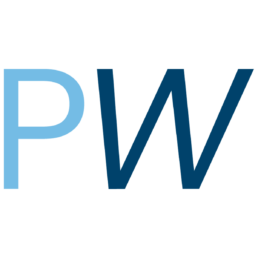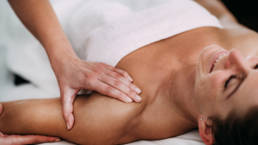You might have been experiencing some joint aches/ pains and you’ve tried everything, from different rehab programs to seeking help from your favorite YouTube fitness guru, Instagram fitness model and read enough fitness magazines and tips.
Maybe you’ve been through multiple different types of orthopedic surgeries and spent plenty of time in hydrotherapy. Somehow you’ve never fully recovered from them and the rehab is not yielding the results that you are after.
What could possibly be next in line to help your tight muscles or “stuck joints“?
Maybe DNS or Dynamic Neuromuscular Stabilization could be a suitable treatment/ rehabilitation option for you.
If you have not heard about this and would like to know more. Let me introduce you to some of the concepts and offerings of DNS and get you acquainted with it in this post.
What is it?
In a nutshell DNS is a rehabilitation approach that stimulates the movement centers in your brain to activate natural patterns of movement/ biomechanics. The natural patterns of movement helps us move the way our bodies were meant to move and allows us to restore our deep innate movement/ stabilizing functions.
This technique originated from the ‘Rehabilitation Prague School‘ and aims to help individuals regain control of their posture, movement and gait. The DNS approach focuses on establishing exercise methods for us to ‘relearn’ motor control patterns that were established during the early years of life (Developmental Kinesiology).
During the early critical years of child development, babies develop ‘motor control‘ and learn how to move via a set of patterns, positions and reflexes. These are embedded into each and every single one of us, and we learn the fundamentals of movement in the first two years of our lives almost automatically. Unfortunately we lose these due to unhealthy repetitive movements (Often times resulting in repetitive strain injuries), imbalances (from prolonged sitting, dysfunctional exercise routines) and injuries.
DNS aims to unlock and restore these patterns by tapping into these centers of the brain by getting us to exercise and move the way babies learn to move. This allows us to re-learn movement patterns naturally.
Why is it significant?
I have come to learn over the years that individuals who suffer from mobility issues, tightness in their muscles and stiff joints usually have an underlying stability problem. To address it effectively one must examine if the root cause stems from poor movement habits and poor body awareness. These can come in various forms such as poor breathing, incorrect spinal posture and improper muscle activation.
When we perform any type of movement, be it sitting, standing, walking or squatting we require functional stabilization which is an activation of our deep neck flexors, diaphragm, abdominal wall, pelvic floor and deep spinal muscles. These muscles activate automatically in a programmatic fashion and in an integrated way to stabilize us. They are muscles of our ‘integrated stabilizing system’ and are key to executing all forms of movement.
A dysfunction in any one of these muscles/ activation would cause our ‘integrated stabilizing system’ to be imbalanced, overloaded and for movement to be sub-optimal.
This could lead to some muscles overcompensating, getting tight, developing trigger points and of course succumbing to injury.
How do we approach these problems/ correct them?
Firstly, we begin by finding out what your movement patterns or compensations may be and comparing them to what a ‘healthy baby’ might look like. An assessment of your various stabilization patterns, tests of your ‘integrated stabilizing systems’ and postural compensations will be conducted.
From there we will form a program and approach with the relevant treatment/ functional exercises to target the problems. The goal here is to ensure we are targeting your integrated stabilizing system and progressively improving it until it becomes second nature and automatic in your movement.
It is worth noting that movement is something that comes naturally and thus automatically. We want to retrain your brain to recognize it’s optimal movement patterns and for you to regain the control of it so that ideal healthy movements become second nature to you.
What do the exercise look like?
The early innings of DNS exercises can be learning to breathe correctly, holding certain developmental poses/ positions and from there moving into crawling, rolling, sitting or squatting.
These exercises may grow to take on more advanced forms like tripod stances, lunging & balancing. As a physical therapist, I usually aim to have clients take on exercises formats that matches their lifestyle, working or sporting requirements.
The exercises are can be done with minimal equipment (Yoga Mat, Towels and occasionally some resistance bands), which makes them ideal to be practiced anywhere, anytime.
For the more advanced and experienced athletes – some of these positions can work up a challenge for your deep muscles and your ‘nervous system’; they can also be helpful to improve performance and can be used in the context of actual high level sports.
Who is it for?
I believe that the benefits from DNS can be wide ranging, so therefore anyone is eligible to try it as a new form / approach towards exercise & wellness.
– Elderly with & without chronic medical conditions and injuries
– Athletic (Professional or weekend warrior) seeking to improve performance & wellbeing
– Average individual seeking wellness & improving longevity/ sustainability in your physical state.
– For those with chronic injuries/ tightness (Muscle tears, Disc injuries, Repetitive stress injuries RSI)
DNS is ideal for some of these situations:
– Muscle Weakness
– Postural correction (Correcting imbalances)
– Improving balance
– Improving breath control
– Stress & anxiety
Related Posts
What are Shoulder Impingements Pt. 1
31 January 2017
A shoulder impingement is a very common condition, whereby certain tendons in the shoulder (rotator cuff tendons) are very briefly compressed during certain movements. The compression occurs when bony structures come into contact with the tendon or the bursa.
0 Comments2 Minutes
Do you know the Acronyms PEACE & LOVE for Soft Tissue Injuries?
6 January 2021
After you get soft tissue injuries, commonly you might do RICE (rest, ice, compression and elevation). However, recently new concept has been introduced. It is called PEACE and LOVE!
0 Comments5 Minutes


